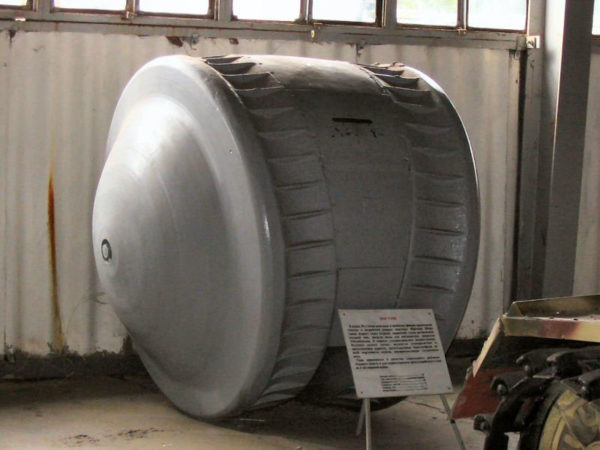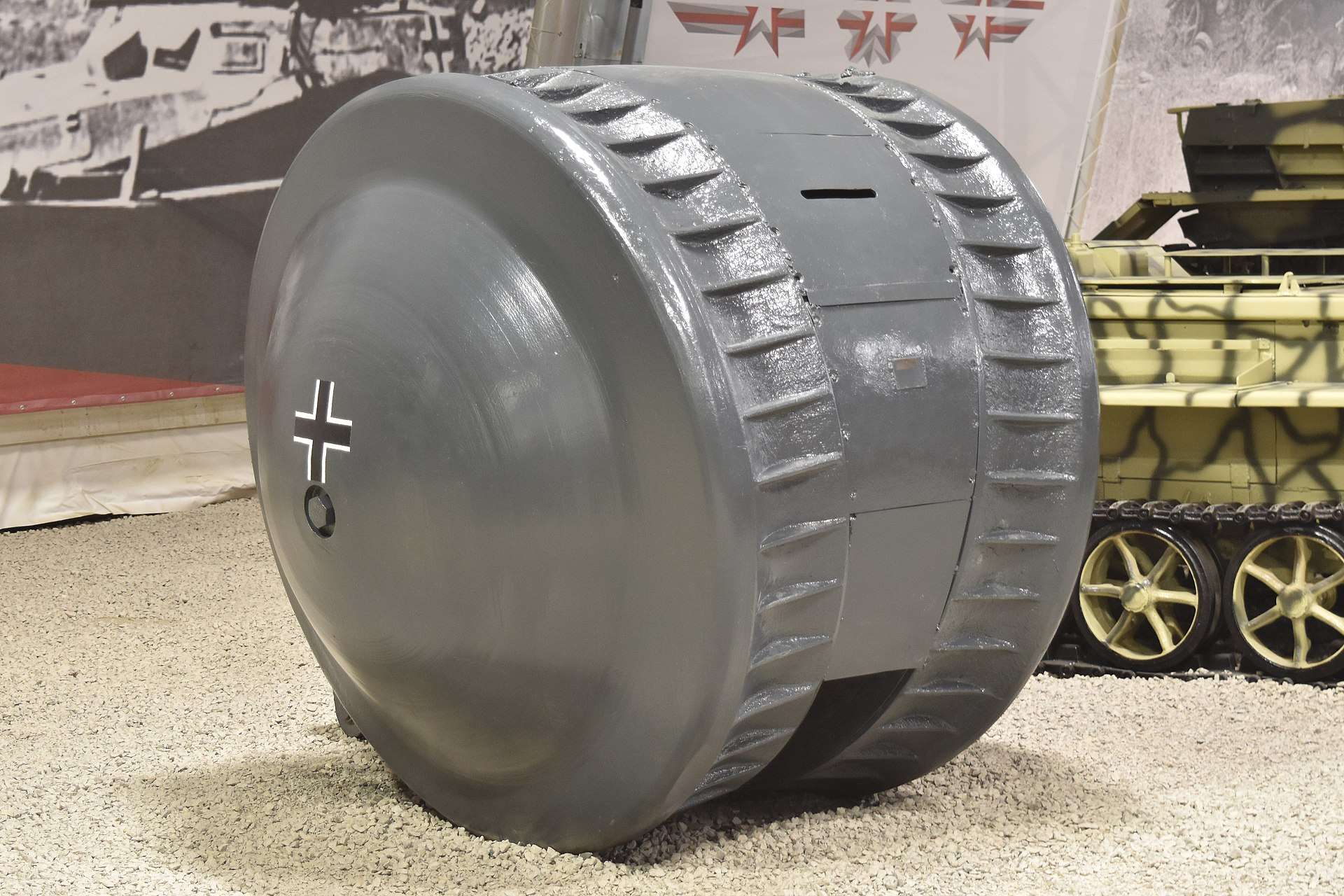 German ReichBall Tank – 1 Built
German ReichBall Tank – 1 Built

Introduction
After the First World War, unique concepts to deal with the No Man’s Land issue came by the bucketload. One of more unique ideas being the rolling or ball tank. The Germans were the first to try a working prototype with the Treffas-Wagen in 1917. Another concept came in 1936 with the “Tumbleweed tank”, designed by the Texan inventor A.J. Richardson. It never left the drawing board.Listed as Item #37 in the Kubinka tank museum, the Kugelpanzer, or Rollzeug (literally meaning “ball tank” and ”rolling vehicle”), is visually similar to its Treffas-Wagen predecessor. It is the only known built example of one of these ball-tanks still in existence. It is a rarity among military vehicles.
The vehicle was captured by the Red Army. The most commonly believed theory is that at some point in the 1940s it was sent to Japan as part of Germany’s technology sharing scheme, and was captured in 1945 in Manchuria. However, another report states that it was captured at the Kummersdorf proving grounds along with the infamous Maus. A front view of the Kugelpanzer as it sits in Kubinka. Source: – geektimes.ru
A front view of the Kugelpanzer as it sits in Kubinka. Source: – geektimes.ru
Design
The vehicle, manufactured by the famous Krupp company, is believed to be a one man scouting vehicle. It is definitely not an offensive AFV, as the armor is only 5 mm at its thickest. The only armament it would’ve carried may have been an MG 34 or 42, or in the case of Japanese service, possibly a Type 96 LMG mounted a few inches below the vision slit. The port is now welded over.The tank consists of a centre cylindrical compartment with a single direct vision slit at head height, and a large ingress/exit hatch at the rear. The vehicle moved via two rotating hemispheres that make up the sides of the vehicle. These hemispheres were powered by a single cylinder two-stroke engine, which powered the vehicle to a meagre 8 km/h. It’s believed that it used the smaller wheel on the rear of the tank to steer, and keep it stable.
Fate
Tanks Encyclopedia’s own rendition of the Kugelpnzer

A side shot of the Kugelpanzer displaying its supporting tail. Source: – www.britmodeller.com
Theories
Over the years there has been much conjecture about what the Kugelpanzer was designed for. The most common beliefs are that it meant to be a cable layer, artillery spotter, or scout vehicle. No one even knows whether it’s a pre/early war design, or a late war design.It is this author’s theory, however, that it is a pre-war design for an infantry support weapon, that could traverse a no-man’s land kind of environment. The “Tumble-weed tank” design of the same era, was also of the same purpose. An armored vehicle, not as heavy or cumbersome as a tank, that would move at the same speed as the infantry while giving fire support. In the Kugelpanzer’s case, this fire support would’ve been given by a single machine gun. Its armor would’ve stood against small arms fire, but anything larger that an anti-tank rifle would go straight through. If the vehicle was used by the Japanese, it is possible that, after the outbreak of WWII, with its fast moving battlefields, the Germans realized the futility of the design and shipped it to the Japanese.However, there are no sources to back any of these speculations. Until documents about the vehicle will emerge from the Russian archives, little else can be done to ascertain the Kugelpanzer’s origin and purpose.An article by Mark Nash
Kugelpanzer |
|
| Dimensions | Height (diameter) 4.9 ft (1.5m), Length 5.5 ft (1.7m) |
| Crew | 1 (driver) |
| Propulsion | Single Cylinder 2-stroke. |
| Speed (road) | 4.9 mph (8 km/h) |
| Armament | Belived to be 1 7.62 mm machine gun |
| Armor | 5 mm (0.1 in) all round |
| Total production | 1 |